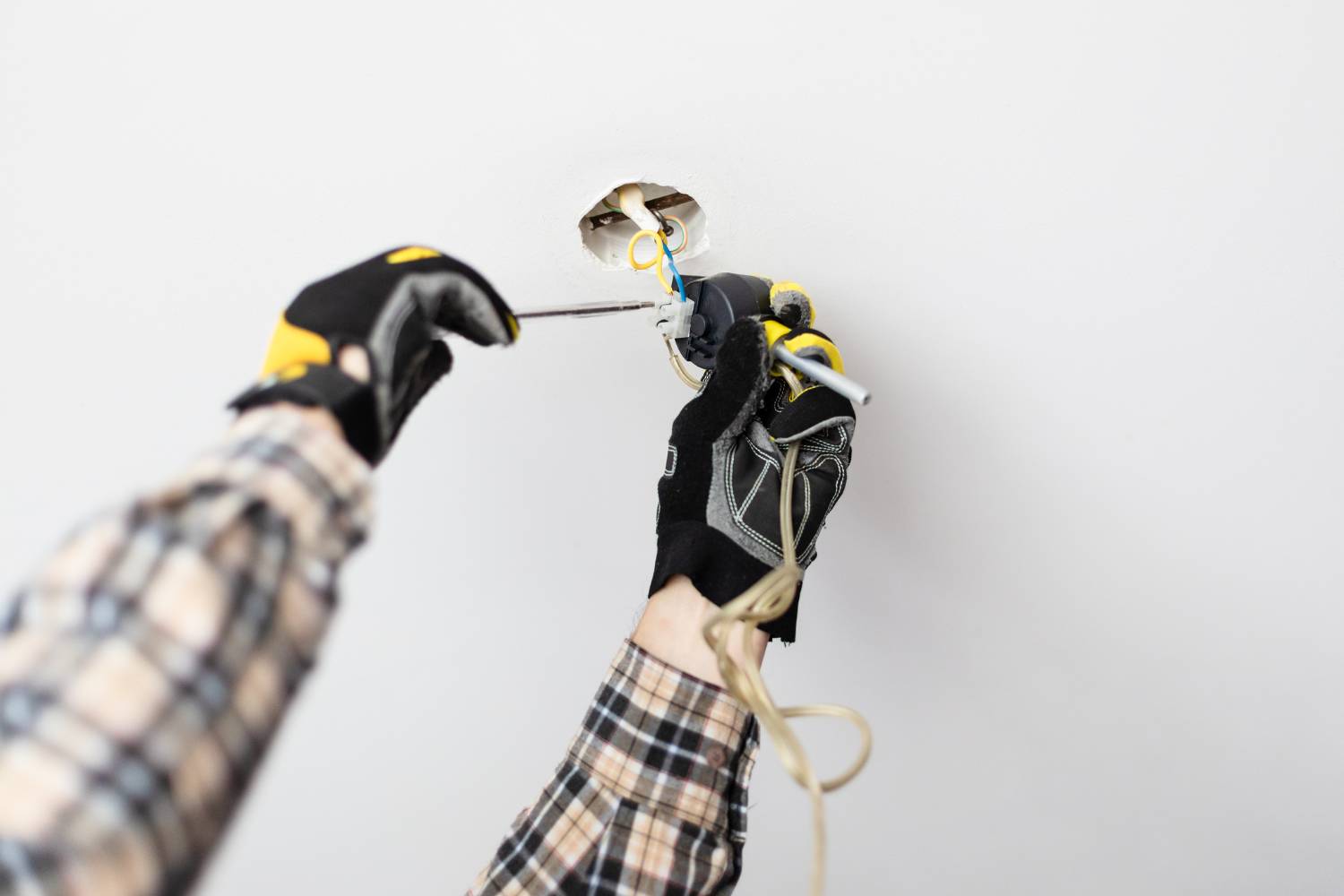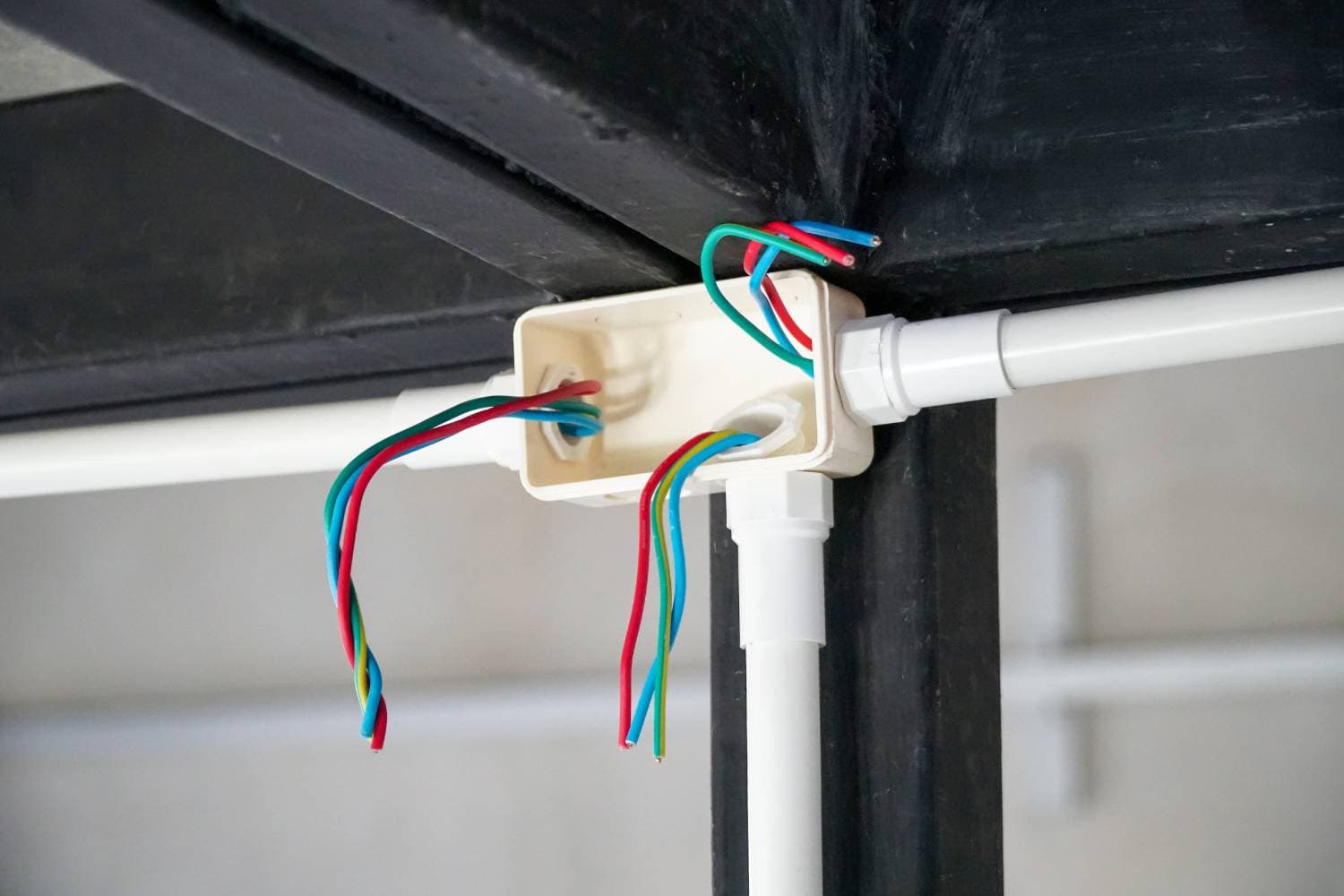Running overhead electrical wire to your garage is a practical and efficient way to power a detached garage. This guide provides a step-by-step process to ensure you complete the task safely and effectively.
Assessment and Planning
Evaluate the Project Scope
- Measure Distance: Determine the distance from the main electrical panel in your house to the garage.
- Check Local Codes: Familiarise yourself with local building and electrical codes, particularly the National Electrical Code (NEC), to ensure compliance.
- Assess Power Needs: Calculate the power requirements of your garage to choose the right wire gauge.
Plan the Wire Route
- Direct Path: Select the most direct path to minimise the wire length.
- Avoid Obstacles: Plan a route that avoids trees, utility lines, and other potential interferences.
- Mark the Path: Use stakes or flags to clearly mark the intended wire path from the house to the garage.
Gathering Materials and Tools
Essential Materials
- Weather-Resistant Wire: Choose a suitable wire like THWN (Thermoplastic Heat and Water-resistant Nylon-coated wire) for outdoor use.
- Conduit: Protect the wire with appropriate conduit.
- Support Structures: Use utility poles or sturdy brackets to support the wire.
- Connectors and Insulators: Ensure secure and safe connections.
Necessary Tools
- Wire Cutters: For cutting the wire to the required length.
- Drill and Bits: For creating holes in walls and installing supports.
- Wrench Set: For tightening bolts on supports.
- Voltage Tester: To verify proper connection and safety.
Preparing for Installation
Obtain Permits
- Contact Local Authorities: Inquire about the necessary permits and inspections.
- Submit Applications: Apply for the required permits and schedule any needed inspections.
Safety Measures
- Turn Off Power: Ensure the main power supply is off before starting work.
- Wear Protective Gear: Use gloves, goggles, and other protective gear for safety.
Installing Conduit and Supports
Install Support Structures
- Utility Poles: Install poles for long-distance wire runs.
- Support Brackets: Use brackets for shorter distances.
Secure Supports
- Anchor Securely: Ensure all support structures are firmly anchored to handle the wire’s weight and tension.
- Even Spacing: Space supports evenly to maintain stability.
Pulling and Connecting the Wire
String the Wire
- Attach to Insulators: Secure the wire to insulators on the support structures to prevent surface contact.
- Maintain Tension: Keep the wire taut but not too tight to allow for expansion and contraction.
Connect to Electrical Panel
- Turn Off Power: Ensure the main power is off before making connections.
- Attach Wire: Connect the wire to a new circuit breaker in the main electrical panel.
- Run Conduit: Use conduit to protect the wire as it enters and exits the buildings.
Grounding and Bonding
Ground the System
- Install Ground Rod: Place a ground rod near the garage.
- Bond Wire: Connect a bond wire from the electrical panel to the ground rod.
Ensure Proper Bonding
- Bonding Conductors: Make sure all metallic parts are bonded to the grounding system to prevent electrical hazards.
Testing and Inspection
Inspect Connections
- Double-Check: Verify that all wire connections are secure and meet electrical codes.
- Schedule Inspection: Have a licensed electrician inspect the installation.
Test the System
- Restore Power: Turn the main power back on.
- Test Outlets and Switches: Ensure all outlets and switches in the garage work correctly.
Completion and Cleanup
Final Touches
- Secure Components: Ensure all electrical components are securely fastened.
- Label Circuits: Label the new circuit in the main electrical panel.
Clean Up
- Remove Debris: Clear any debris and tools from the installation site.
- Inspect Area: Perform a final inspection to ensure the area is safe and clean.
Conclusion
Running overhead power to a detached garage involves careful planning, adherence to electrical codes, and proper installation techniques. Following these steps ensures a safe and reliable power supply to your garage. Always consider consulting with or hiring a licensed electrician to avoid hazards and ensure compliance with local regulations.



